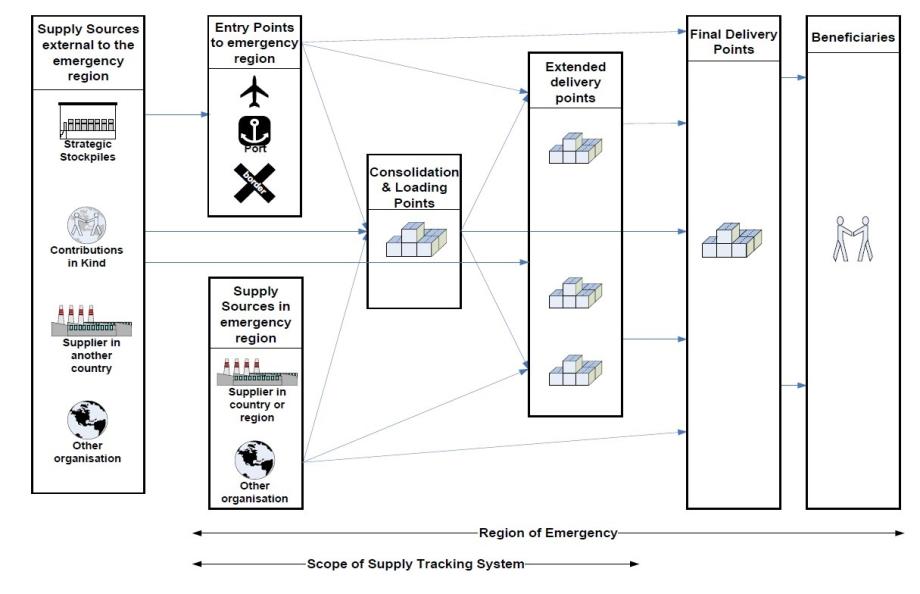The diagram below shows the scope of service provided by the Logistics Cluster during an emergency operation:
The Logistics Cluster tracks humanitarian food and non-food cargo within an emergency response, wherever the Logistics Common Transport or Storage Services are being used. Cargo movements within an operation that do not use the common service provision are outside the responsibility of the Logistics Cluster.
In other words, the transfer of goods from the customer to the initial delivery point; and the transfer of goods from the Extended Deliver Point (EDP) to the beneficiaries is the responsibility of the partner and are therefore explicitly outside the scope of the tracking system.
Goods are tracked from initial arrival at a designated entry point. The goods then travel through various Consolidation & Loading Points (CLP). Tracking ends once the goods leave the final Extended Delivery Point.
Purpose
RITA is a tool to manage the logistics of transporting (mainly non-food) cargo for the humanitarian community. The main purposes of the system are:
- Manage incoming cargo – both direct pick-up from customers’ warehouses; and delivery by a customer to cluster-controlled warehouse.
- Manage cargo in transit – from determining vehicle requirements and schedules to answering customer enquiries about the status and whereabouts of their cargo.
- Manage customs requirements, by having a better view of what each consignment contains.
- Manage outgoing cargo – both releases (where the customer picks up their goods from the cluster-controlled warehouse); and deliveries (to a customer-specified address).
- Improve customer service - Organisations need to know where their goods are in the delivery chain, if only at a high level – In transit, Received, Dispatched, Delivered, etc.
- Basic warehouse management reporting and monitoring.
- Reporting operation-wide statistics.
This translates into a number of specific features:
- Maintain a single reference point for the goods over the lifetime of the consignment (Consignment ID).
- Track the movement of all goods with full transparency, via a DHL-style online tracking mechanism (Consignment Tracking Number). Because RITA is internet-based, customers can now independently see the progress of their goods through the use of a computer-generated tracking number to ensure confidentiality.
- Simplify the complex process of scheduling vehicles over multi-point routes – this is currently done at dispatch time. The dispatch operator can split a single consignment to different vehicles and plan a multi-stop route.

